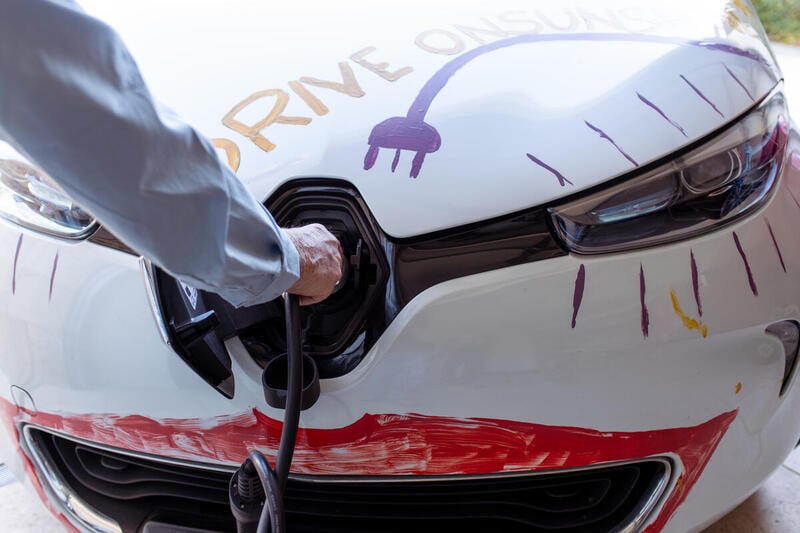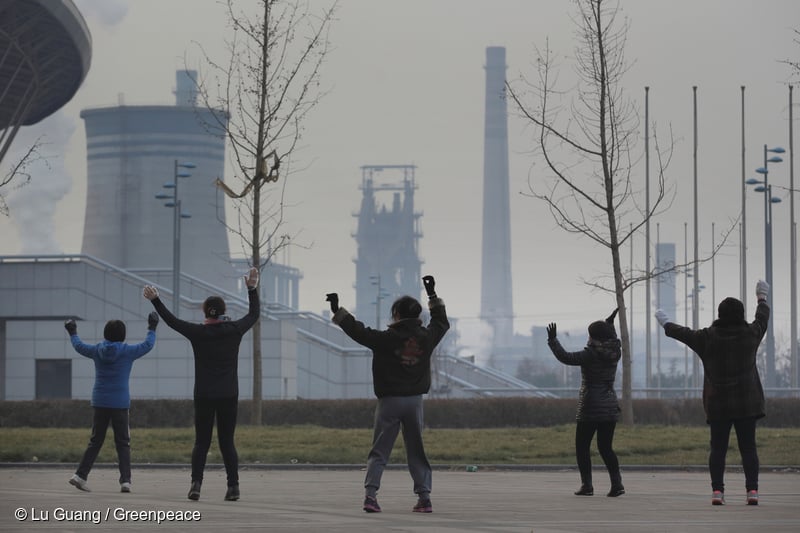TOKYO – Top automakers, including Toyota and Nissan, risk hefty fines and other penalties for overshooting the US EPA’s new 2032 emissions standards, according to a new analysis by Greenpeace East Asia. [1]
The standard, which was announced on March 20, 2024, requires automakers to limit their average fleetwide emissions to below 85 grams per mile (gpm) CO2 by 2032.
Greenpeace East Asia climate and energy campaigner Mariko Shiohata said:
“Although legacy automakers have prioritized improvements in fuel efficiency, the rules of the game are now changing. Our research finds that, even if Toyota and Nissan meet their own sales targets, they are on track to significantly exceed the legal US emissions limit. The company expected to overshoot the limit by the biggest margin is Toyota. If automakers hope to comply with this regulation, it is critical that they move rapidly away from fossil fuel vehicles, including hybrids.”
The research evaluates whether the top seven automakers in the US by sales – Toyota, Honda, Nissan, Ford, General Motors, Stellantis, and Hyundai-Kia – are projected to comply with the 85 gpm standard by 2032.
Key findings from the research:
– None of the seven automakers’ current US sales trajectories are compatible with the March 2024 EPA emissions standard. If they do not change course, by 2032, each of the seven automakers would exceed the EPA limit by more than 130%.
– Even if Toyota and Nissan were able to meet their own sales targets, they would still overshoot the EPA limit for 2032 – Toyota by 154% and Nissan by 76%. By contrast, if they meet their own targets, Honda, General Motors, and Ford’s emissions levels would overshoot the emissions limit by 8-12%. [2]
– Toyota’s targets lead to the highest emissions overshoot from the EPA limit by a significant margin. Toyota stands out as the sole automaker in the analysis whose powertrain mix distribution for 2032 would not be compatible with the EPA pathways if the automaker were to meet its own sales targets.
– None of the automakers will be able to meet the EPA emissions limit by relying on advancements in fuel efficiency technology alone. Instead, they must phase out fossil fuel vehicles, including hybrids.
Greenpeace calls on the seven automakers to phase out fossil fuel vehicles by 2030 globally and 2028 in Europe.
“Automakers aren’t just out of step with this regulation, but they’re out of step with the reality of climate change. At a time when the world is experiencing record-setting storms, heatwaves and droughts, industry leaders like Toyota need to strengthen their commitment. For us to have a fighting chance at capping the global temperature increase within 1.5 degree Celsius, Toyota and its peers must phase out fossil fuel vehicles by 2030 worldwide, including hybrids,” Shiohata said.
Notes
[1] The automakers’ projected sales for the year 2032 are based on their own targets and US sales trajectories over the past five years. The average fleetwide CO2 emissions level for each automaker in 2032 is estimated using each automaker’s fuel economy data. An annual fuel economy improvement rate is taken into account. The average fleetwide CO2 emissions levels are compared to the EPA limit of 85 gpm to determine whether each automaker is on track to comply with the EPA standard.
[2] As Stellantis and Hyundai-Kia lack US sales targets for hybrid vehicles, it was not possible to calculate target-based projections for these two automakers.
Media contact
Erin Newport, International Communications Officer, Greenpeace East Asia +886 958 026 791, [email protected]



